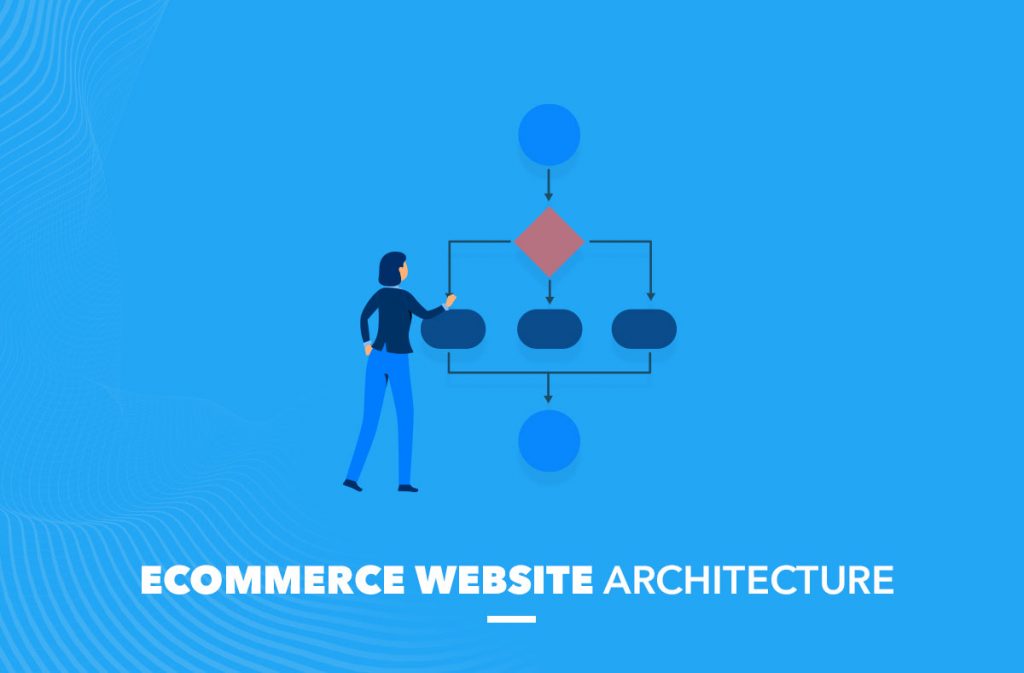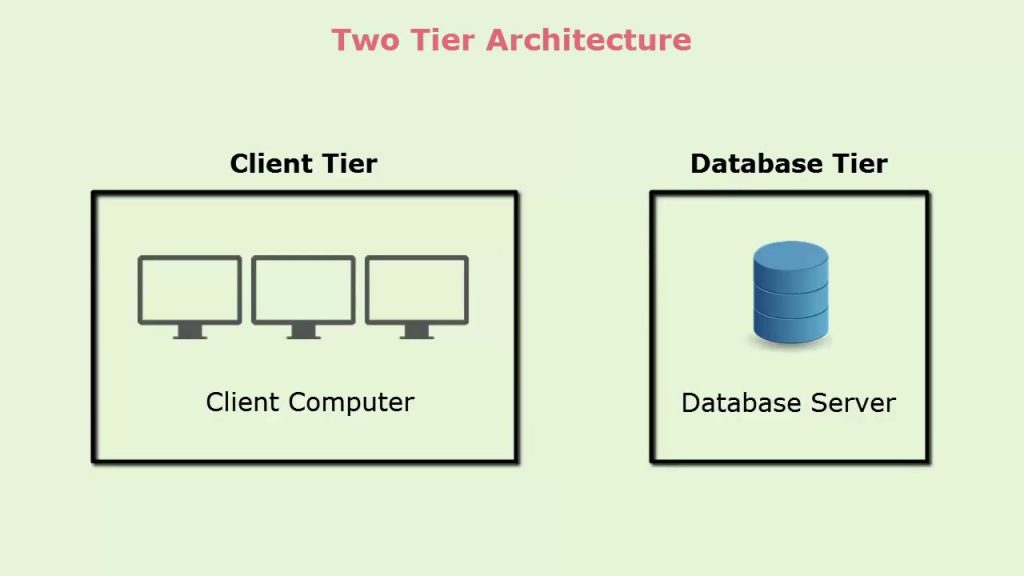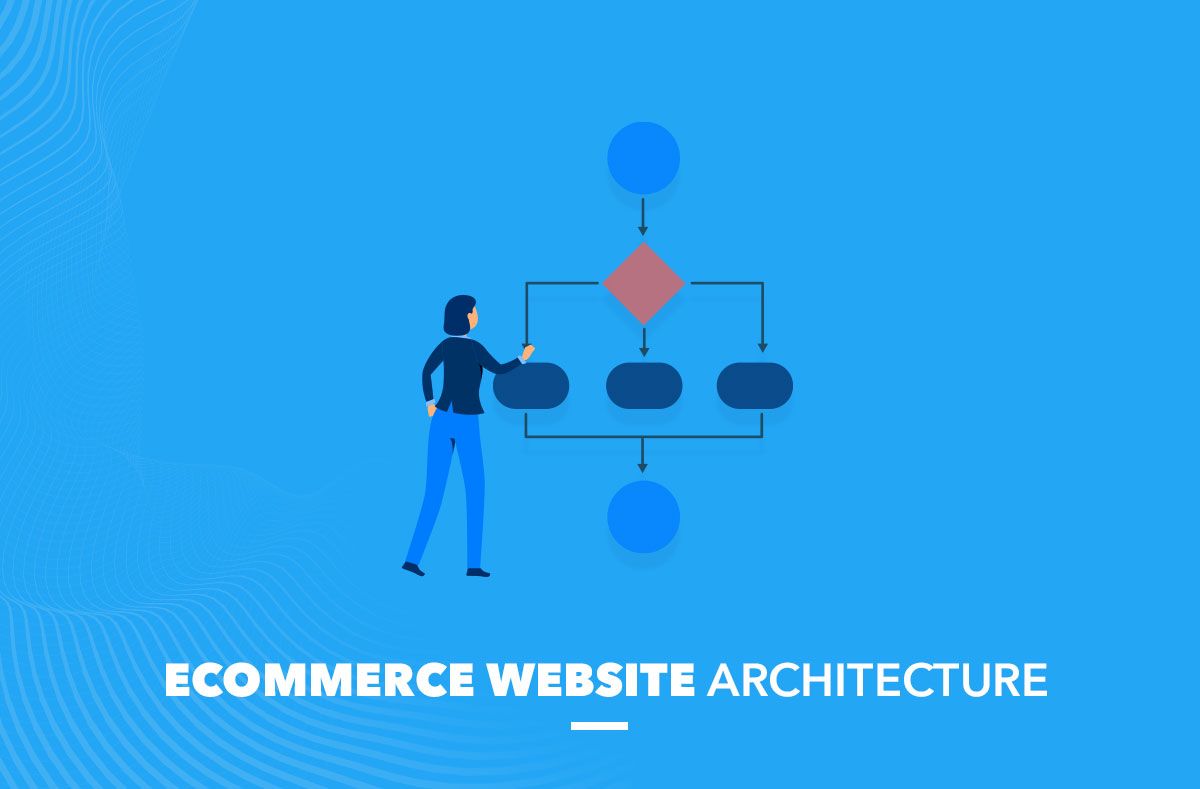
Ecommerce website architecture is important for making the business successful when selling online. The thing is, neither extensive SEO techniques nor increased marketing promotions are not going to help to make the online store successful if it is difficult to navigate and its checkout is not working well. Instead, the smoothly running website is going to attract much more visitors and customers than the poorly working but effectively promoted store, and website architecture plays a great role in the smooth working of the website and its opportunities to be expanded.
E-Commerce System Architecture: Two-tier architecture
The two-tier architecture is the word that you might often hear when it comes to building the architecture of the website. These words simply mean that there are two parts of the business that run on different parts of the architecture: the client-side and the server-side. Usually, the two-tier ecommerce architecture implies that the user interface runs on the client-side while the database data are stored on the server. At this point, the business application logic might run on the client-side or the server-side. The client processes run on the other part, and this helps the entire entity to work quicker and smoother from the customer’s point of view. Practically, the customer-side application runs on the computer of the customer, gathering data that are necessary to have from the customer’s side and presenting the data that need to be presented to the customer from the server-side. Thus, there is a constant interaction between the two sides: server and client.

E-Commerce System Architecture: Three-tier architecture
Sometimes, having two major tiers is not enough for the system to function well. Therefore, there is a need to have three tiers, one of them being the business side. Practically, the three-tier architecture consists of three layers, including the presentation layer, business layer, and data layer. These layers are independent and might run on different servers. Moreover, each layer is treated as a separate module, including independent development and maintenance. Below, each tier is going to be discussed in more detail.

Presentation layer
The presentation layer is the entry point to the three-tier architecture. This part is often the part that is seen by the customer and therefore it is often referred to as a graphic user interface or GUI. The presentation layer consists of the frontend part and the backend part. Such frameworks and libraries as MVC Razor, Vue.js, React, and Angular are applied here. Practically, this layer includes the beginning and the end of the processing requests or data. This layer uses validation to make sure that all necessary data are retrieved when it comes to processing requests.
Business layer
The business layer is also often called a service layer. This layer uses business logic and business rules to save and process data. This layer, for example, tracks and saves user preferences when users log in to the website and make their purchases. At this point, the customer logins to the website and is shown the previously chosen shipping method or previously browsed goods. Types of the payments done by this user also might be saved in the business layer and then used when the user logs in again. Practically, a lot of data processing requests are performed in this layer and might be used to gather data from the customer behavior to save it for preferences and further strategical use.
Data Layer
The data layer is the final layer that is used to process final data requests. The data obtained in the business layer go here too. All these data are processed and stored in the database and usually kept using LINQ to SQL procedures. Thus, the data layer can be connected directly to the database or it can send the data to the data service to handle them.
Advantages and Disadvantages of Client-Server Architecture
Basically, advantages of the client-server architecture include but are not limited to the effective computing and high productivity of the interface work. With the use of client and server architecture, data storage techniques are enhanced, and connectivity and reliability of the connection and operation are growing. Practically, advantages of the client-server architecture include:
- Improved data sharing
- Integrated services
- The use of different platforms
- Data processing capability
- Easy maintenance
- Increased security
At the same time, the client-server architecture might have such disadvantages as overloaded servers and the lagging central architecture when the last ones are not administered well enough. This might mean that the client-server architecture lacks a good network, but generally, the use of client-server architecture is the beneficial choice for growing business.
Conclusion
Practically, the best approach is the three-tiered architecture because it allows gathering business data and building a strategic approach to decision making. Three-tiered architecture is flexible, maintainable, and fast, but it also needs effort and financial investment. However, if you are thinking about building and implementing three-tier architecture, we are ready to help you. The specialists of SOFTLOFT are highly qualified for developing online store projects and specifically at building proper effective architecture. Just contact us and you’ll get an immediate helping hand with your project.



